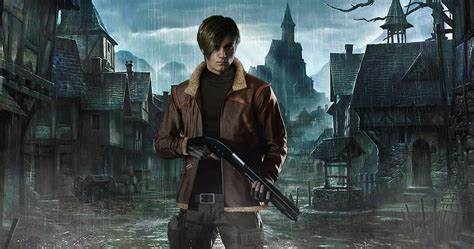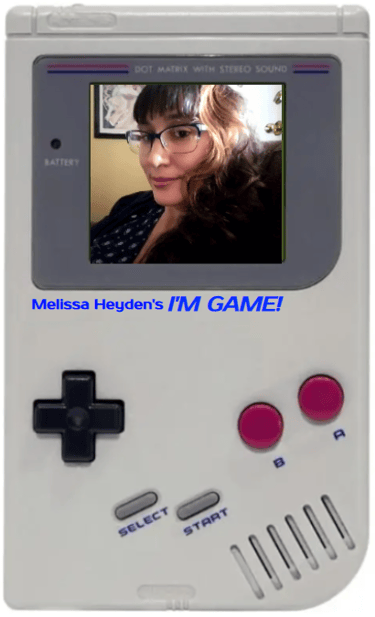

Melissa Heyden's I'M GAME!
Melissa is the newest member of Richard J Schellbach's MonsterKid Central. She will be covering anything that has to do with video games.
But, unlike our Columnists, she's going to be handling Fantasy, Horror and Sci-fi based games and unlike our Critics, she's going to be commenting on the video game industry in general, from time to time. So she's our very first Critic/Columnist.
We'll be posting a new piece from Melissa, four times a year; January, April, July and October. We know you'll love her work as much as we do.

As a long-time fan of The Legend of Zelda series, each new installment brings with it the thrill of revisiting Hyrule and embarking on yet another grand adventure. When Legend of Zelda: Echoes of Wisdom was announced, it instantly jumped to the top of my “must-play” list and for good reason. The twist this time? Players assume the role of Princess Zelda, stepping out of her traditional damsel-in-distress role and into the forefront as the protagonist. Although I was a little bummed about the absence of her Sheik alter ego, the game quickly dispelled my doubts. Echoes of Wisdom is not just a worthy addition to the series but a refreshing evolution that exceeded my expectations.
The story kicks off in classic Zelda fashion: Ganon reemerges, abducts Princess Zelda, and sets the stage for Link to swoop in and save the day. But the narrative takes a sharp turn early on. After Zelda is rescued, it is Link who finds himself captured and pulled into a mysterious dimensional rift. Left without her usual savior, Zelda must rise to the occasion and take charge of the mission to rescue Link and restore balance to Hyrule.
This setup flips the series' traditional script on its head. By placing Zelda in the spotlight, Echoes of Wisdom gives fans an opportunity to experience the kingdom through her perspective. It’s a clever narrative device that breathes new life into the series while maintaining the familiar themes of courage, wisdom, and power.
At the heart of Echoes of Wisdom is Zelda’s ability to create “echoes” — magical imitations of objects and enemies she encounters in Hyrule. Assisted by her floating companion, Tri, this mechanic forms the backbone of gameplay and sets Zelda’s adventure apart from Link’s traditional sword-and-shield exploits.
Here’s a breakdown of the echo system:
● Monster Echoes: Defeating an enemy allows Zelda to create an echo of that monster, which can then fight alongside her in future encounters. Each monster has unique abilities, with the Lynel echo being the strongest and most versatile ally.
● Object Echoes: Zelda can create echoes of inanimate objects like boxes, furniture, or trampolines, which are often key to solving puzzles or reaching hidden areas.
● Bed Echoes: Surprisingly versatile, bed echoes can restore Zelda’s health when she jumps into them. They can also be stacked to form makeshift stairs or bridges, making them indispensable in platforming challenges.
The echo system encourages experimentation, and the game rewards creativity. Learning what each echo can do often leads to surprising solutions for puzzles or unique combat strategies. This mechanic is an innovative addition that feels distinctly tailored to Zelda’s role, balancing combat, exploration, and puzzle-solving in a way that keeps the gameplay engaging and varied.
Hyrule in Echoes of Wisdom is as expansive and enchanting as ever. The game retains the open-world design introduced in Breath of the Wild, allowing players to freely explore lush forests, towering mountains, and forgotten ruins. However, there’s a distinct shift in tone with Zelda at the helm. The narrative places a greater emphasis on uncovering the lore of Hyrule, and many of the game’s side quests delve into her connection to the kingdom and its people.
The new areas introduced in the rift dimension are visually stunning and mechanically inventive. These zones feel like a surreal blend of traditional Hyrule and otherworldly dreamscapes, filled with gravity-defying puzzles and distorted architecture. The developers clearly poured their hearts into creating an experience that feels both familiar and fresh.
Zelda’s promotion to the protagonist brings with it a deeper exploration of her character. No longer confined to cutscenes, players get to see her grow from a hesitant royal into a confident hero. Her interactions with other characters, from loyal allies to reluctant foes, reveal new facets of her personality, making her more relatable and inspiring than ever before.
The game’s puzzles and dungeons strike a satisfying balance between challenge and accessibility. While veterans of the series might breeze through some of the simpler puzzles, the later dungeons and optional challenges are sure to test even the most seasoned players.
For completists, there’s plenty to do beyond the main quest. Collectibles include fragments of stars and stamps, as well as powerful heart fragments that upgrade Zelda’s abilities. There are also quest items that you receive upon completing a quest.
Legend of Zelda: Echoes of Wisdom is a bold and triumphant entry in the franchise, proving that Princess Zelda is more than capable of carrying an adventure on her own. The game takes the series’ beloved formula and innovates in meaningful ways, delivering a narrative and gameplay experience that feels both nostalgic and groundbreaking.
Whether you’re a longtime fan or a newcomer to the series, Echoes of Wisdom is a must-play. It’s a celebration of everything that makes The Legend of Zelda great, while also charting a new path forward. For me, it’s a shining reminder of why this series continues to hold a special place in the hearts of gamers worldwide.
9.5/10
July 2025
Echoes of Wisdom:
A Triumphant Evolution for The Legend of Zelda Series

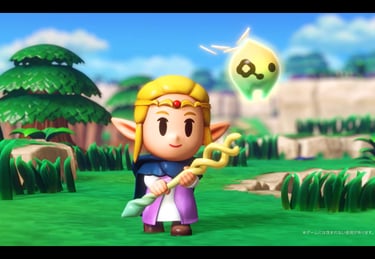

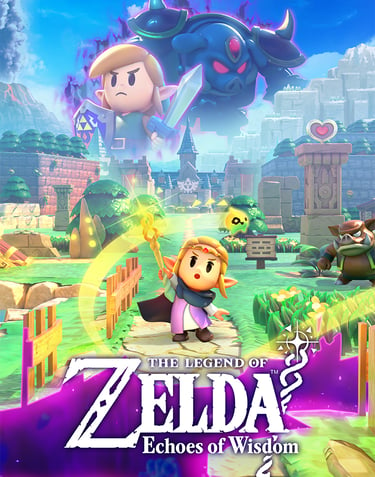


For October, I decided to shake things up with a psychological thriller instead of the usual slasher fare. After hearing some buzz, I opted for Madison, a game that has intrigued many with its eerie atmosphere and chilling gameplay. Let me tell you, if you plan on diving into this one, be prepared: this is definitely not a game you want to tackle alone in the dark. The spooky ambiance and the challenging puzzles make it a compelling experience, but it also tests your nerves and your problem-solving skills in ways you might not expect.
From the very moment I started Madison, I was plunged into a disorienting and mysterious environment. The game throws you into a dimly lit room that immediately sets the tone for the entire experience. There are ominous bloodstains smeared on the floor, and the distant, unsettling screams in the background create a sense of immediate dread. It doesn’t take long to realize that you’re trapped in this nightmarish setting, and figuring out how to escape becomes your primary objective. This initial scenario is just the beginning of what quickly turns into a harrowing experience.
The atmosphere in Madison is where the game truly excels. The sense of dread and claustrophobia is palpable from the start. The house itself is a character... decaying, foreboding and full of dark secrets. Every room you explore feels like it holds something sinister, and the way the game uses lighting and shadows adds to the oppressive mood. The environments are meticulously designed to create an overwhelming sense of unease. Every creak of the floorboards and every flicker of light contributes to the growing tension, making it a truly immersive experience.
The sound design in Madison is another standout feature. The game uses ambient noises—like distant thumps, whispers, and eerie wails—to build an atmosphere of constant anxiety. The soundtrack is minimalistic yet haunting, perfectly complementing the visual horror. There were moments when the ambient sounds made me jump out of my seat, adding to the game's overall sense of suspense and fear. The way the game plays with sound keeps you on edge and enhances the feeling of isolation and terror.
As for gameplay, Madison focuses heavily on exploration and puzzle-solving rather than action. The puzzles are a central part of the experience, and they are intricately woven into the narrative. Each puzzle you encounter is tied to the game's story and the dark history of the house. Solving these puzzles often involves examining your surroundings closely and thinking creatively. While most of the puzzles are engaging and rewarding, there were a few moments where I found them to be overly cryptic. These instances led to some frustration as I struggled to figure out the solutions. However, the satisfaction of solving a particularly tricky puzzle often made the effort worthwhile.
One of the most intriguing aspects of Madison is the cursed camera that you use throughout the game. This camera is more than just a tool for taking pictures; it plays a critical role in solving puzzles and uncovering hidden elements of the story. The camera's ability to reveal disturbing imagery and hidden clues adds a unique dimension to the gameplay. Using it to navigate the game's many horrors was both fascinating and nerve-wracking. It’s a clever mechanic that keeps you engaged and on edge.
Graphically, Madison delivers a visually striking experience. The level of detail in the house’s decay is impressive, and the way light and shadow are used creates a hauntingly beautiful environment. Every room you enter is meticulously designed to contribute to the overall sense of dread. The graphics help to enhance the game's atmosphere, making the horror feel all the more real and immediate.
The voice acting and overall sound design further enhance the immersion. The voice acting is solid and helps to bring the story to life, while the sound effects contribute significantly to the game’s tension. The combination of these elements creates a deeply immersive experience that kept me engaged and on edge throughout my playthrough.
In terms of performance, Madison runs quite smoothly on the PS4. There are occasional minor glitches, such as slight frame rate drops or objects clipping through walls, but these issues are relatively rare and don’t significantly impact the overall experience. The game’s load times are reasonable, and the technical hiccups are minor enough that they don’t overshadow the immersive horror experience.
Overall, Madison is a standout psychological thriller that offers a genuinely unsettling experience. It’s perfect for October if you’re looking for a game that combines intense atmosphere with challenging gameplay. The way the game creates a constant sense of dread through its environment, sound design, and narrative is impressive. While it does have its frustrations—particularly with some of the more cryptic puzzles—the overall experience is haunting and memorable. If you’re ready for a horror game that will keep you guessing and give you chills, Madison is definitely worth playing. Just make sure you have someone nearby to share in the scares, because this game is definitely best experienced with company.
8/10
Madison
A Haunting Descent Into
Psychological Horror


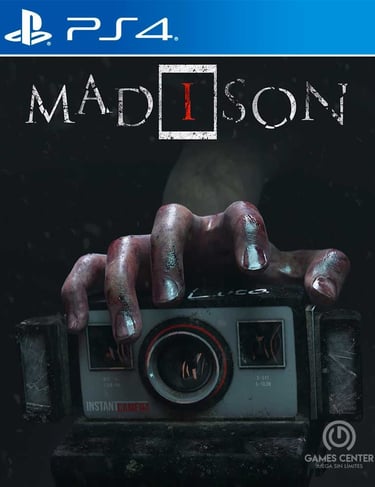



October 2024
Okay Folks, it’s time to delve back into the mines of gaming history for another oldie but goodie, “Paper Mario And The Thousand-Year Door”. Originally released in 2004 on the Gamecube, this beloved game has returned with enhanced graphics and an enchanting soundtrack, capturing the charm of the original and inviting both new and old players to experience its magic once again. This game definitely brings you back to a simpler time when you could just sit in your pajamas and play games all day. Although I know some of you never took off the pajamas (live your best life!). "Paper Mario And The Thousand-Year Door" offers an immersive experience that will keep you engaged for hours on end.
The story begins with a lore about a prosperous town that is mysteriously brought to ruin and all that remains is an unknown treasure locked deep beneath the town. Princess Peach is given a box that carries the map to get the treasure... and can only be opened by one with a pure heart. She sends the map to Mario requesting his help. Of course, Mario agrees and heads over to her right away, but when he gets there the Princess is nowhere to be found. Sounds like we got some adventuring to do.
As with most RPGs, you will assemble a team of unique and charismatic characters to accompany you on your epic journey. Each character possesses their own distinct personality and abilities, adding depth to both the gameplay and the narrative. These abilities come in handy not only during battles but also when solving puzzles and unlocking new areas throughout the game. In fact, their powers often provide an extra incentive to revisit previously explored locations, as hidden treasures and secrets await those who dare to explore.
However, one aspect that may disappoint some players is the limitation of having only one companion at a time join you in battles, With a diverse and intriguing cast of characters, it's natural to want to have them all by your side during combat. While you can switch characters mid-battle, this consumes a precious turn. Nevertheless, the need to strategically utilize each character's abilities adds an element of challenge and keeps battles engaging.
Speaking of battles, prepare to be enthralled by the unique setting in which they take place. Imagine yourself on a grand stage, with a live audience eagerly watching your every move. The more spectators, the greater your opportunities to increase your star power. By performing stylish and impressive moves, you'll captivate the audience and earn valuable star power, which can be used to unleash devastating special attacks on your enemies. The amount of star power at your disposal is determined by the number of stars you've discovered throughout your journey. The more stars you collect, the more potent your attacks become, adding a satisfying sense of progression and power to your battles.
Also, during battle to use your partners’ powers optimally you have to follow different button commands. I don’t mind this and think it’s a nice way to keep the battles interesting, but there’s one character where every time I tried to use their powers, it was a 50/50 shot if said powers worked correctly. I don’t know if I just have really strong thumbs or maybe I’m not as coordinated as I like to believe I am? Whatever the reason for the unpredictability of this character it creates a lot of frustration when you need their abilities to hit.
In addition to the thrilling battles, "Paper Mario And The Thousand-Year Door" offers a variety of items to collect that enhance your gameplay. Star pieces are scattered throughout the game and can be traded in for badges. These badges bestow different abilities that can aid you in battles. They can enhance your attack, defense, and even change your appearance. You can find badges as you explore or purchase them from stores, providing you with a sense of customization and strategy in your gameplay.
As you progress through the game, you will encounter familiar enemies from the Mario universe. You have the option to avoid fighting them by walking or running past them, but be cautious, as enemies will give chase. The boss battles in "Paper Mario and the Thousand-Year Door" are relatively easy, catering to players of all ages. However, the final stage of the game presents a significant challenge, with a series of nonstop boss battles. Make sure you are well-equipped and prepared before stepping through the final door.
In conclusion, "Paper Mario And The Thousand-Year Door" stands as a testament to the enduring charm and brilliance of the Mario franchise. Its improved graphics, enchanting soundtrack, and captivating storyline make it a must-play for both nostalgic fans and newcomers alike. Embark on a grand adventure, gather a team of unforgettable characters, and brace yourself for thrilling battles that will keep you entertained for hours on end. Get ready to unlock the secrets of the thousand-year door and experience the magic of this timeless gem.
8.5/10
July 2024
Unveiling The Secrets: The Timeless Adventures Of Paper Mario And The Thousand-Year Door
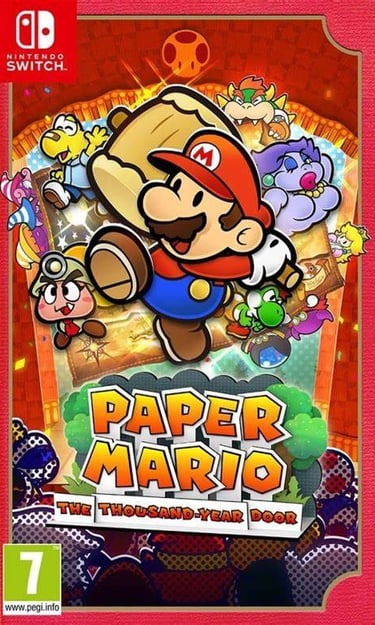

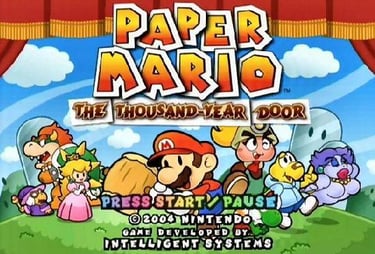



April 2024
Capturing Terror:
Unraveling the Haunting Mysteries of Fatal Frame:
Maiden of Black Water
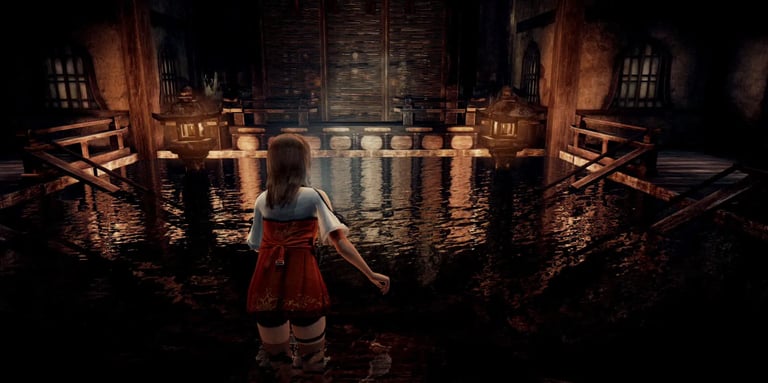

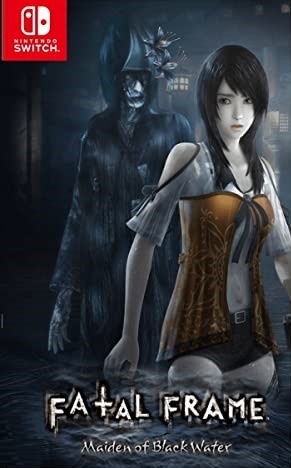

Venturing into the realm of horror games often leads players on a rollercoaster of emotions, from fear to exhilaration. "Fatal Frame: Maiden of Black Water" offers an immersive experience that plunges players into a world teeming with supernatural entities, mystery, and dread. Developed by Koei Tecmo, this installment in the acclaimed Fatal Frame series is a chilling journey through eerie landscapes and haunted locales, punctuated by the unique gameplay mechanic of capturing ghosts through the lens of a camera. In this review, we'll explore the eerie depths of Maiden of Black Water and delve into its gameplay mechanics, narrative, atmosphere, and overall impact on the horror gaming genre.
At the heart of Fatal Frame: Maiden of Black Water lies its distinctive gameplay mechanic - the Camera Obscura. Players assume the roles of multiple protagonists, each equipped with this mystical camera capable of exorcising malevolent spirits. The Camera Obscura serves as both a weapon and a tool for uncovering secrets. By using the camera to photograph apparitions at the right moment, players can weaken and banish these spectral foes.
The game employs the Switch’s unique features, utilizing the GamePad as the Camera Obscura itself. This integration enhances immersion, as players physically move and aim the controller to capture ghostly entities. While the controls may take some time to master, they ultimately contribute to the game's tense atmosphere, making encounters with spirits feel all the more harrowing.
Maiden of Black Water features a blend of exploration, puzzle-solving, and combat, with a focus on atmosphere and tension. The haunting locales players traverse are laden with secrets and lore, encouraging thorough exploration. Puzzles are integrated seamlessly into the environment, often requiring players to uncover clues through keen observation and deduction. Combat encounters with ghosts are intense, requiring quick reflexes and precise timing to capture them effectively. The tension is palpable, especially during encounters with more formidable apparitions.
Set in the eerie locale of Mt. Hikami, a place shrouded in legend and tragedy, Fatal Frame: Maiden of Black Water weaves a complex narrative of loss, guilt, and redemption. The game follows multiple protagonists, each drawn to the mountain by their own motivations, as they uncover the dark secrets hidden within its mist-shrouded forests and dilapidated structures.
The narrative unfolds through a series of interconnected chapters, with each character's story intertwining with the others'. As players progress, they unravel the mysteries of Mt. Hikami and confront its tortured spirits. The storytelling is atmospheric and immersive, with a sense of foreboding permeating every encounter. The game effectively builds tension through environmental storytelling, audio cues, and chilling visuals, keeping players on edge throughout their journey.
The character development is well-executed, with each protagonist grappling with their own demons while confronting the malevolent entities that haunt Mt. Hikami. Themes of grief, regret, and the supernatural intertwine, adding depth to the narrative and characters' motivations. While the plot may occasionally falter in pacing, the overall story remains engaging and compelling, driving players forward in their quest for answers.
Visually, Fatal Frame: Maiden of Black Water excels in creating a hauntingly beautiful world fraught with peril. The environments are meticulously crafted, from the mist-laden forests to the decaying ruins of abandoned structures. Each locale is infused with a sense of history and tragedy, further immersing players in the game's eerie atmosphere.
The character models are well-designed, with intricate details that convey the protagonists' emotions and struggles. The ghostly apparitions, in particular, are rendered with chilling realism, their twisted forms and vacant stares instilling a sense of dread in players. The use of lighting and shadow adds to the game's ominous ambiance, heightening the tension during encounters with spectral foes.
Sound design plays a crucial role in enhancing the game's atmosphere, with an evocative soundtrack that shifts seamlessly between moments of quiet reflection and intense horror. Eerie ambient sounds, such as creaking floorboards and distant whispers, further contribute to the sense of unease, keeping players on edge throughout their journey.
Fatal Frame: Maiden of Black Water stands as a chilling addition to the acclaimed horror series, offering a compelling blend of atmospheric storytelling, innovative gameplay mechanics, and spine-tingling scares. With its immersive world, engaging narrative, and tense gameplay, the game is sure to delight fans of the horror genre and newcomers alike. Whether you're a seasoned ghost hunter or a brave soul looking to test your courage, prepare to embark on a harrowing journey into the heart of darkness with Fatal Frame: Maiden of Black Water.
8/10


This is the first time in my 30+ years of gaming that I have ever played a Final Fantasy game. I know, everyone, stop clutching your pearls! I just never saw the appeal, and I think it’s one of those situations where the more everyone gushed about it, the less I wanted to play it. However, with the remake of Final Fantasy VII, and the strong endorsement from friends I decided to give it a shot.
The initial impression was undeniably striking – the graphics, a hallmark of the series, were nothing short of breathtaking. Final Fantasy has always been synonymous with cutting-edge realism, and the characters, adorned with their beautiful anime hair, showcased the pinnacle of visual splendor. As a newcomer, though, I couldn't shake the feeling that the game's narrative was tailored for those already familiar with the original installment. The plot, revolving around a group of eco-terrorists battling a colossal corporation draining the Earth's lifeblood, initially appeared convoluted to me. Nevertheless, the game dropped subtle hints about deeper layers to the protagonist, Cloud, leaving me intrigued and eager for the story to unfold.
Speaking of Cloud, our stoic and reluctant hero, I couldn't help but notice his lack of a distinct personality. Despite his standoffish demeanor, other characters inexplicably gravitate towards him, expressing unwavering love and even romantic interest. Forming an emotional connection with Cloud proved challenging, especially when juxtaposed with the vibrant personalities of the supporting cast. Take Barret, for instance, a character with a Mr. T-like personality with an unwavering dedication to Mother Earth. His fervent rants about the planet bleeding resonated throughout the game, adding depth and dynamism to the overall narrative. Then there's Tifa, the beautiful childhood friend and love interest of Cloud, further enriching the tapestry of characters that surround our enigmatic protagonist.
In addition to boasting a vibrant ensemble of protagonists, Final Fantasy VII Remake introduces a compelling array of formidable villains, seamlessly blending the nostalgia of beloved foes from the original game with the thrill of encountering fresh adversaries. Among these captivating characters, Roche, a third-class soldier, stands out as a particularly enchanting presence, characterized by an infectious blend of flair and high energy. His dynamic persona injects a distinct vibrancy into the game, making him an unexpectedly cherished antagonist. The fervor with which Roche approaches every confrontation is nothing short of magnetic, leaving me with an earnest wish that he could be a playable character to further immerse myself in his unique style. Adding to his allure, Roche plays a pivotal role in one of my favorite fight sequences, notably featuring an exhilarating motorcycle battle. It's hard not to be enamored with the sheer spectacle of this encounter, underscoring the game's ability to seamlessly weave together compelling characters and thrilling gameplay moments. After all, who doesn’t love a motorcycle fight?
One of the standout features that immediately captured my attention was the game's incorporation of choices that directly influence the unfolding narrative. This added layer of complexity not only deepens the gaming experience but also enhances its replay value significantly. In an era where a full-priced game often covers only a fraction of the entire story, this branching narrative is a welcome addition, justifying the investment of both time and money. The gameplay itself is a delightful mix of fun and accessibility – not overly complicated yet engaging enough to keep players hooked. And let's not forget the undeniable cool factor of wielding a giant sword, which somehow manages to make every action that much more impressive.
Final Fantasy VII Remake not only captivates players with its compelling main storyline but also invites exploration and engagement through a myriad of side quests. These optional adventures contribute to the rich tapestry of the game world, offering players the opportunity to delve deeper into the lives of its inhabitants and uncover hidden treasures. From aiding distressed citizens to undertaking daring missions, the side quests in Final Fantasy VII Remake are diverse and unpredictable, ensuring that no two journeys through the game are identical. Beyond their rewards in terms of experience points and valuable items, these side quests add layers of complexity to the narrative, weaving smaller tales that resonate with the broader themes of the game. Whether it's assisting a struggling merchant, unraveling the mysteries of a forgotten locale, or confronting formidable monsters, the side quests enhance the overall gaming experience, encouraging players to immerse themselves fully in the expansive and intricately crafted world of Final Fantasy VII Remake.
Despite my initial hesitations and the daunting prospect of stepping into a beloved franchise with decades of history, my journey into Final Fantasy VII has been a surprisingly enjoyable experience. The captivating story, stunning graphics, and diverse cast of characters have managed to overcome my preconceived notions, and I find myself eagerly anticipating the unfolding of this epic adventure. As I navigate the intricate web of eco-terrorism, corporate greed, and the mysteries surrounding Cloud, I can't help but appreciate the allure that has captivated gamers for generations. Perhaps I was late to the party, but as they say, better late than never. The next chapter of this game releases February 29, 2024. Be there or be square!
9/10
January 2024
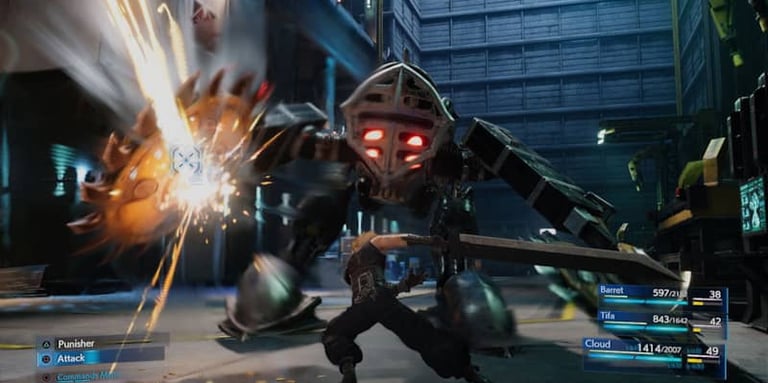


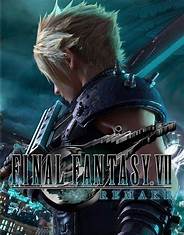


FAR-FROM-FINAL... FANTASY
The Good, The Bad, And The Undead
Resident Evil 4 (RE4) is the latest remake in the Resident Evil (RE) series. The original RE4 launched in 2005 as a Gamecube exclusive. Unlike the other original RE games to receive remake-overs, the original RE4 still holds up pretty well. I was curious to see how Capcom planned on improving this game, especially since RE4 was one of the most successful games in the series. The game has definitely improved graphics and boss fights, but there were some aspects that could have been improved upon. So, let’s get into the good and the bad of this game.
The detail they can now create on the human face is amazing, but apparently that technology falls short when it comes to dogs. In the original game the dogs looked cartoonish but still identifiable as dogs. The new dogs, (or their proper names, Colmillos), look like static electricity furballs with teeth. If the intent was to make them appear more scary, I think they failed in that respect, but it did help ease the tension with a good laugh. Also, Carlos was a bit scarier looking than he was in the original. He looks more like a Latin Willem Dafoe. His character also seems a bit more clownish than in the original, whereas before, there was more of an air of mystery to him.
I understand that, historically, gaming has been a male-dominated industry, but the gamer ladies are showing up in record numbers. That being said, the ladies in this game are lacking depth. Our damsel in distress is Ashley. She’s the President’s daughter who was kidnapped by the infected and has zero sense of self-preservation. Once you rescue her you can direct her to take cover, but her idea of taking cover is moving two feet to the right to receive open fire on her face. They improve on her being dead weight to Leon by having her kidnapped every other chapter, but if you have to do that to make the game more enjoyable then why not have Leon save her at the very end? I just think that instead of hiding her in the shadows, the developers could have made her more of a badass who’s more into surviving instead of trying to charm her rescuer. I will say that I am happy to see that Ada Wong finally looks like she’s Asian, but again, she’s a femme fatale spy with a skin tight red dress. I know that’s always been Ada’s signature look, but can’t we aim for more suitable spy gear?
This game has a very detailed map which begs to be explored. It’s difficult to do sometimes as you are running for your life, but once the dust settles you can scour the lands for treasures. Then you can take those treasures to our old friend, the Merchant. He has returned with new merch and upgrades. He also has tasks for you to complete to earn spinels that you can trade for cool items to help you on your mission. Add to that, the Merchant now has a shooting gallery where you can earn tokens to trade in for more upgraded items. These little extras definitely help with the replay value of this game. I’m talking to all you completionists out there. You know who you are!
I have always been partial to the first three RE games in the series. They provided an element of suspense, lulling you into a false sense of security and then suddenly a zombie or a licker would spring on you! I was not a big fan of the original RE4 because it was the first RE game to veer from the classic formula and move towards more fast-paced combat; turning it into Resident Duty. I also dislike how RE4 is broken into chapters. It takes away from the immersion of the game and makes me think more of an arcade style game. RE4 is also where we move away from zombies and more towards the infected. I understand that zombies are slower, but the true horror of zombies are their numbers. To create a game where you have to be selective with your ammo usage, knowing that you truly cannot kill them all adds a creative element to your gameplay. Whereas in this game the infected are faster and wield weapons... so they’re not too different from regular humans. Although some do have demons that sprout forth from their skulls which does create a good fun party time.
Overall, this is a very fun and fast-paced game. It has a variety of different combat scenes and different forms of melee attacks that keep the game exciting. I did enjoy this remake immensely, and as a stand alone game it is fantastic. However, when a game is part of a series one must consider all the games that came before. In the series it breaks away from the classic horror and suspense of the other games and leans towards being more action heavy.
Definitely pick this one up for some spooky gameplay and rejoice for there is new DLC that just released September 21st.
8/10
October 2023
